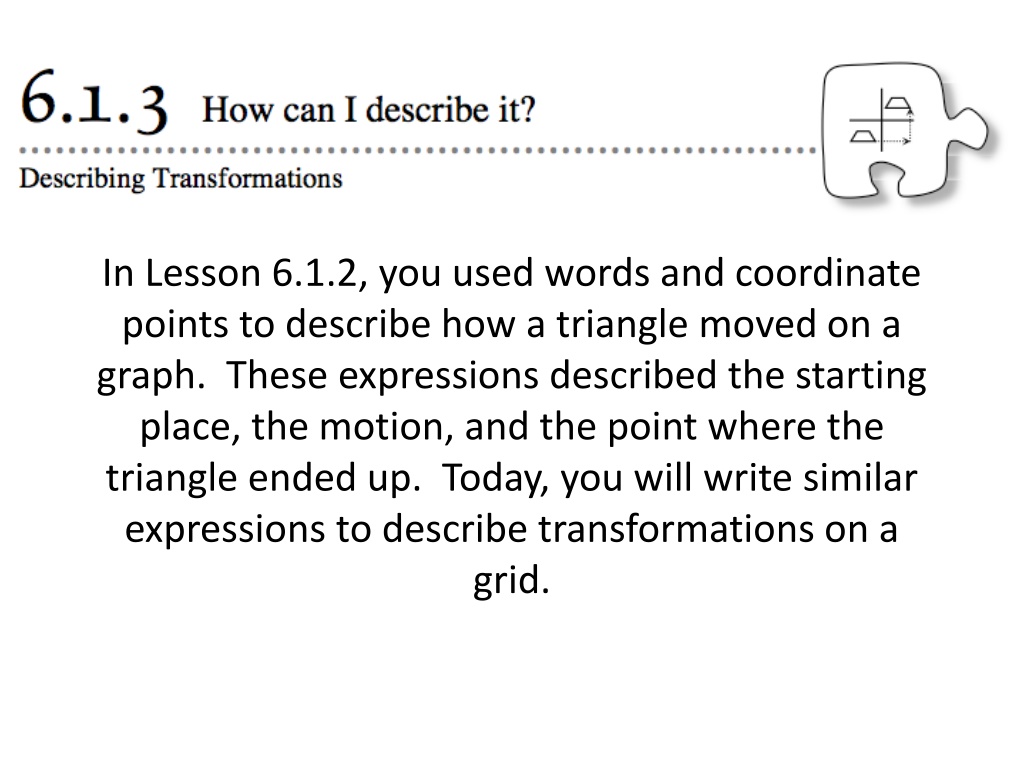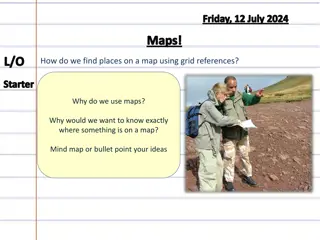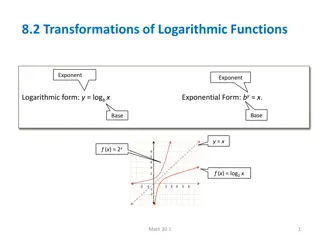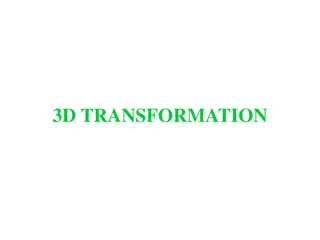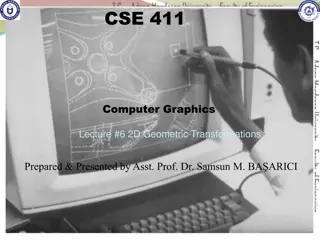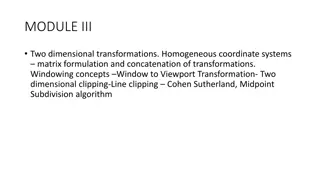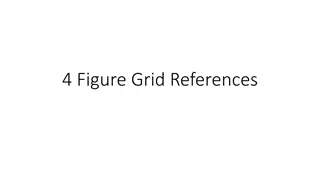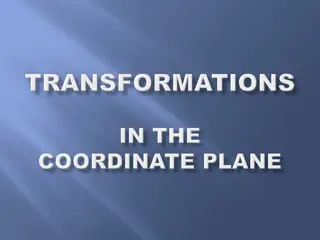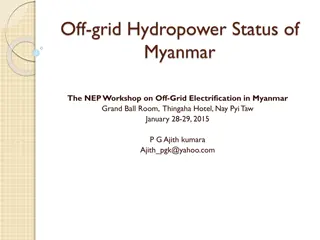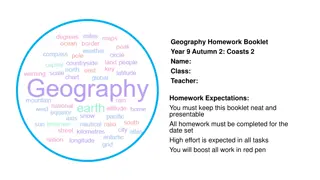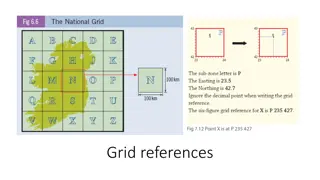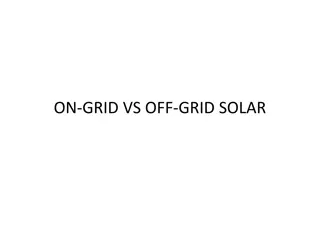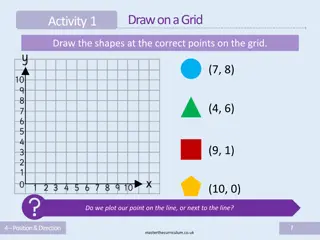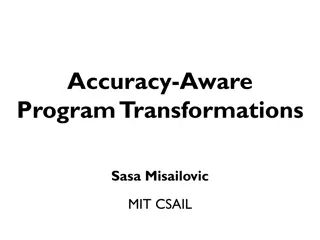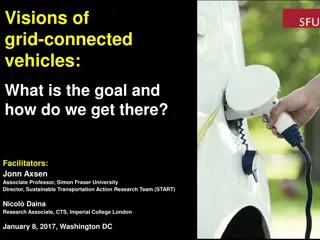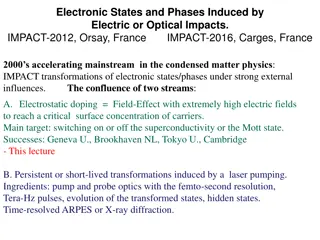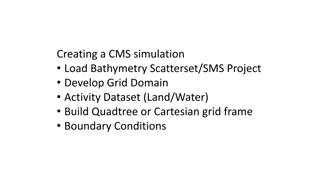Understanding Transformations on a Grid
Explore how shapes move on a grid through translations, rotations, and reflections. Learn to describe coordinate point changes and visualize transformations without graphing. Discover the key concepts in transforming shapes and identifying corresponding points after transformation.
Download Presentation

Please find below an Image/Link to download the presentation.
The content on the website is provided AS IS for your information and personal use only. It may not be sold, licensed, or shared on other websites without obtaining consent from the author. Download presentation by click this link. If you encounter any issues during the download, it is possible that the publisher has removed the file from their server.
E N D
Presentation Transcript
In Lesson 6.1.2, you used words and coordinate points to describe how a triangle moved on a graph. These expressions described the starting place, the motion, and the point where the triangle ended up. Today, you will write similar expressions to describe transformations on a grid.
6-18. Rosa changed the position of quadrilateral ABCD to that of quadrilateral WXYZ. How did the coordinates of the points change? she wondered. 6- 18 eTool a. Describe how Rosa transformed ABCD. Was the shape translated (slid), rotated (turned), or reflected (flipped)? Explain how you know. b. How far did ABCD move? In which direction?
c. Point B became point X. What are the coordinates of points B and X? Name them using (x, y) notation. d. How did the x-coordinate of point B change? How did its y-coordinate change? For each coordinate, write an equation using addition to show the change. e. Visualize translating WXYZ 10 units to the right and 12 units up. Where will point X end up? Without counting on the graph, work with your team to find the new coordinates of point Y. Write equations using addition to show the change.
6-19. Rosa translated a different shape on a grid. Use the clues below to figure out how her shape was moved. a) The point (4, 7) was translated to (32, 2). Without graphing, describe how the shape moved on the grid. b) Another point on her original shape was ( 16, 9). After the translation, where did this point end up? For each coordinate, write an expression using addition to show the change.
6-20. Rowan transformed quadrilateral CDEF below to get the quadrilateral PQRS. a) Describe how Rowan transformed the quadrilateral. Was the shape translated, rotated, or reflected? Explain how you know. b) Rowan noticed that the y- coordinates of the points did not change. What happened to the x-coordinates? Compare the x-coordinate of point D with the x-coordinate of point Q. Do the same with points E and R and with points F and Sand with points C and P. What do you notice?
c) Can you describe the change to all of the x-coordinates with addition like you did in problems 6-18 and 6-19? If not, what other operation could you use? Explain. d) What parts of quadrilateral CDEF are the same as quadrilateral PQRS? How can you show that the corresponding angles are the same measure and the parallel sides remain parallel?
6-21. Imagine that Rowan reflected quadrilateral CDEF from problem 6-20 across the x-axis instead. What do you think would happen to the coordinates in that case? a. First visualize how the quadrilateral will reflect across the x-axis. b. Set up a four-quadrant coordinate graph on graph paper and plot quadrilateral CDEF from problem 6- 20. c. Reflect quadrilateral CDEF across the x-axis to get quadrilateral JKLM. d. Compare the coordinates of point C with point J, point D with point K, point E with point L, and point F with point M. What do you notice? How can you use multiplication to describe this change?
6-22. In problem 6-20, Rowan noticed that multiplying the x-coordinates by 1 reflects the shape across the y-axis. a. Test this strategy on a triangle formed by the points A( 3, 5), B(1, 2), and C(0, 8). Before you graph, multiply each x-coordinate by 1. What are the new points? b. Graph your original and new triangle on a new set of axes. Did your triangle get reflected across the y-axis?
6-23. In the last three lessons, you have investigated rigid transformations: reflections, rotations, and translations. What happens to a shape when you perform a rigid transformation? Do the side lengths or angles in the figure change? Do the relationships between the lines (parallel or perpendicular) change? Why do you think reflections, rotations, and translations are called rigid transformations?
6-24. Stella used three steps to move the key on the graph at right from A to B. On your graph paper, draw the key at A. (A triangle can be used to represent the key.) Then follow the steps Stella wrote below. What was her last move? Explore using the 6-24 Student eTool.
6-25. Additional Challenge: Do you think there is a way to use translations to create a reflection or a rotation? Or can reflections be used to move a shape in the same way as a rotation? To investigate these questions, begin by making a graph like the one below. Then complete parts (a) through (c). a. Reflect (flip) the triangle across the x-axis. Then reflect the new triangle over the y-axis. b. Rotate the original triangle 180 around the point (0, 0). What do you notice? c. Is there a way to use more than one reflection step so that at the end, the triangle looks like it was translated (slid)? If so, describe the combination of moves you would use.
6-26. LEARNING LOG In your Learning Log, describe what the terms translate, rotate, and reflect mean in your own words. For each term, demonstrate the movement with a diagram. Title this entry Rigid Transformations and include today s date.
Rigid Transformations Rigid transformations are ways to move an object while not changing its shape or size. Specifically, they are translations (slides), reflections (flips), and rotations (turns). Each movement is described at right.
A translation slides an object horizontally (side-to-side), vertically (up or down), or both. To translate an object, you must describe which direction you will move it, and how far it will slide. In the example at right, Triangle A is translated 4 units to the right and 3 units up. A reflection flips an object across a line (called a line of reflection). To reflect an object, you must choose a line of reflection. In the example at right, Triangle A is reflected across the x-axis. A rotation turns an object about a point. To rotate an object, you must choose a point, direction, and angle of rotation. In the example at right, Triangle A is rotated 90 clockwise ( ) about the origin (0, 0). Definitions:
